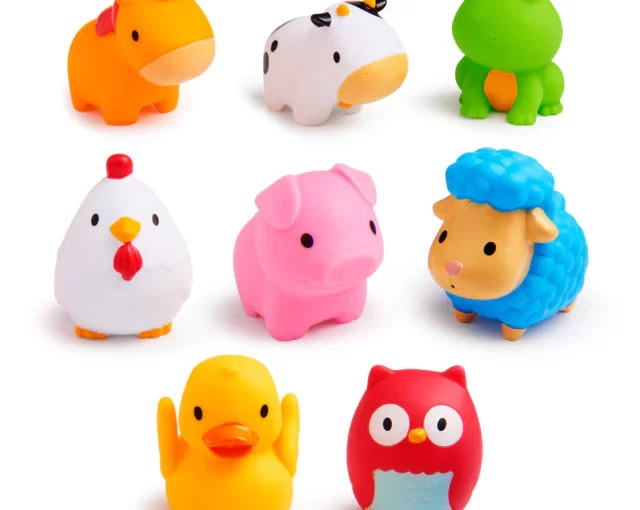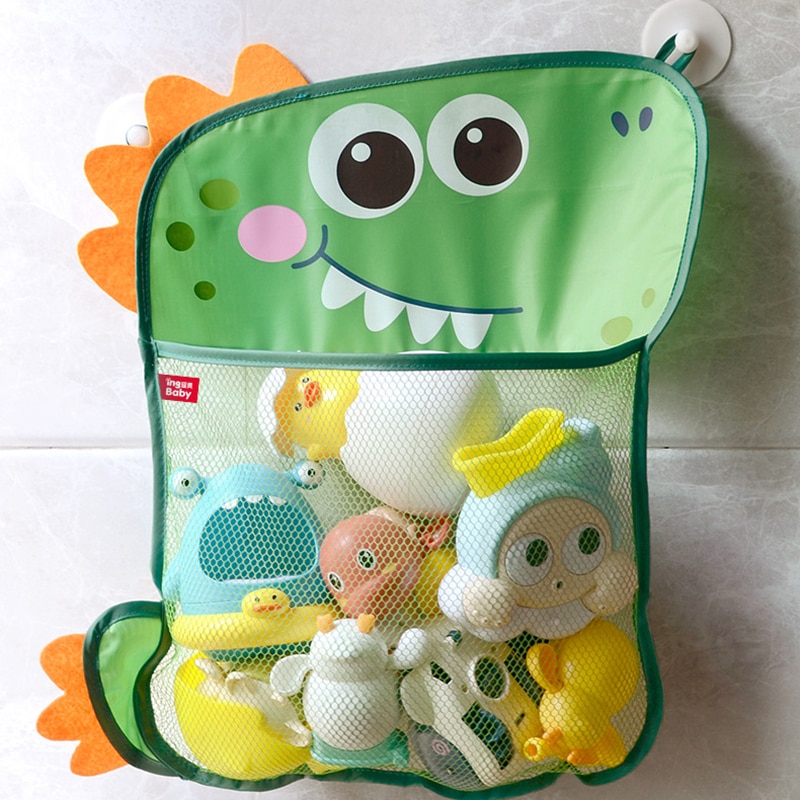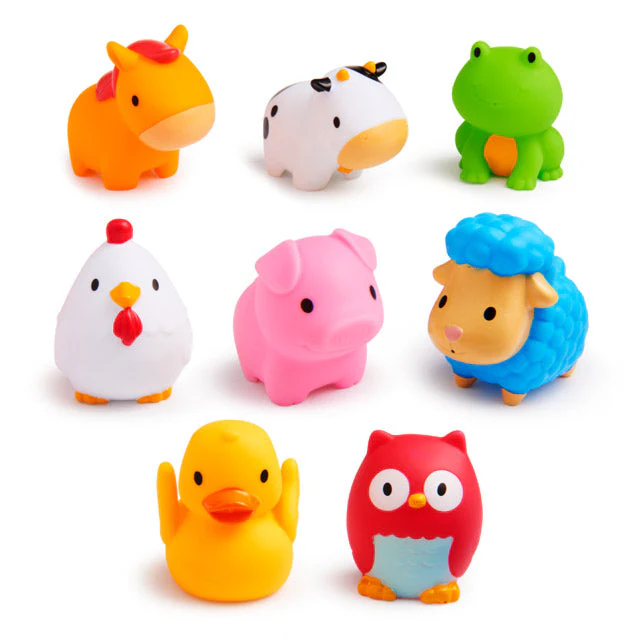Importance of Safety in Bath Toys
Bath time can be a splash with the right toys. Animal bath toys make for unforgettable giggles and learning moments. But, the safety of these toys is paramount. Every parent’s main concern is their child’s well-being. Thus, choosing safe animal bath toys is critical.
Young children love to chew on anything they can get their hands on, including bath toys. Toys made from harmful materials can pose health risks if kids ingest chemicals. Also, small parts from these toys can be a choking hazard. Safe toys are designed to be large enough to prevent such dangers.
Toys that are not water-tight can trap moisture. This can lead to mold and bacteria growth. These can cause various health issues if kids are exposed during bath time. So, toys that are easy to clean and dry will prevent these risks.
Quality is also essential. Bath toys take a lot of abuse. From being squished, stretched, and sometimes thrown, they need to be durable. High-quality toys won’t break easily, which further ensures they are safer for kids.
Finally, checking for official safety standards is a must when selecting toys. Look for certifications that confirm toys are free of harmful substances and safe for babies and toddlers.
In conclusion, when we talk about animal bath toys, we’re not just choosing items for play. We are also making decisions that keep our kids safe. So, always prioritize safety in bath toys, and enjoy peaceful and fun bath times with your little ones.
Types of Animal Bath Toys
When it comes to animal bath toys, variety abounds. These toys come in countless shapes, sizes, and forms to amuse and engage your little ones during bath time. Here, we’ll explore the most common types of animal bath toys that you can consider for your child’s fun and educational baths.
- Floating Toys: These toys stay afloat and move around the water surface. They often resemble ducks, frogs, fish, and other water-loving creatures.
- Squirting Toys: Great for interactive play, these toys can take in and squirt out water. They usually come in the form of aquatic animals and are a hit for splashy play.
- Suction Toys: These toys can stick to the bathtub walls. They add an element of surprise and spatial learning. Sea stars and octopi are popular suction toy shapes.
- Rubber Toys: Classic rubber duckies fall into this category. Made of soft, flexible material, they are perfect for safe chewing and squeezing.
- Soft Fabric Toys: Ideal for younger babies, these absorbent toys are meant to soothe and can double as washcloths. They’re often shaped like cute marine animals.
- Bath Books: Waterproof and educational, bath books with animal themes teach animal names, sounds, and more. They make for an enjoyable learning experience.
- Bath Puzzles: Foam puzzles with animal shapes stick to the tub when wet. They enhance cognitive skills and hand-eye coordination.
Choosing the right type of animal bath toy can boost your child’s enjoyment and development. Always keep in mind the age and interests of your child when selecting a toy. Remember to prioritize the safety features discussed previously to ensure a fun and secure bath time. Next, we’ll delve into the materials used in crafting these playful bath companions.
Materials Used in Animal Bath Toys
When picking out animal bath toys, what they’re made of is key. The materials used must be non-toxic, sturdy, and easy to clean. Here’s a rundown on the common materials found in these toys:
- Rubber: A go-to for many animal bath toys, like the classic rubber duck. Natural rubber or silicone are best since they’re often BPA-free and phthalate-free.
- Plastic: It’s lightweight and floats well, but watch for BPA-free or non-PVC plastics to ensure safety.
- Foam: Used in bath puzzles and some floating toys. It should be mold-resistant or treated to prevent growth of mold and bacteria.
- Fabric: Soft fabric toys for the little ones should be absorbent yet quick-drying to hinder mold.
- Silicone: Flexible and heat-resistant, silicone is a great choice for toys that can withstand some chewing.
Each material has its pros and cons. For example, rubber and silicone are great for chewing but need regular checks for wear. Plastic can crack but is often the most affordable. Foam pieces are perfect for learning but require thorough drying after each use.
Before buying, squeeze and bend the toys to test durability. Look for any parts that could break off or cause harm. Safety matters most, so consider materials that align with the safety priorities discussed earlier. Kids will chew, squeeze, and splash these toys, so we need to choose wisely for their health and happiness during bath time.
How to Choose the Right Bath Toy for Your Child
The right animal bath toy can turn bath time into an adventure. Yet, making the correct choice is more than picking the cutest toy. Here are steps to help you choose wisely:
- Consider Your Child’s Age: Infants and toddlers have different needs. Infants benefit from soft, absorbent toys, while older children may prefer interactive ones like squirters.
- Think About Interests: Does your child love a particular animal or color? Matching the toy to their likes can keep them engaged in bath time longer.
- Safety is Key: As mentioned earlier, ensure the toys are free from harmful chemicals and without small, detachable parts.
- Easy to Clean: Choose toys that are simple to clean and dry to discourage mold growth. Those with no holes are often a better choice.
- Durability Matters: Pick toys that can take the wear and tear of bath time play without breaking.
- Educational Value: Opt for toys that can teach something, like animal names or sounds, which adds a learning aspect to the fun.
By keeping these considerations in mind, you can select animal bath toys that are not only fun but also safe, educational, and suited to your child’s developmental stage. Remember, the goal is a combination of safety, education, and enjoyment to enhance your child’s bath time experience.
Tips for Cleaning and Maintaining Bath Toys
To keep your child’s animal bath toys in tip-top shape, regular cleaning is essential. Clean toys ensure a safe and hygienic play environment. Here’s how you can maintain their cleanliness:
- Rinse After Use: Always rinse toys under warm water post-bath to wash away soap residue and dirt.
- Air Dry: Allow the toys to air dry completely. Moist environments breed mold, so drying is key.
- Soak in Vinegar: Mix equal parts vinegar and water. Soak toys to remove grime and bacteria. Rinse well after.
- Check for Trapped Water: Squeeze out water from toys with holes. This prevents mold inside them.
- Avoid Harsh Chemicals: Use natural cleaners when possible. They are safer for toys and your kids.
- Regular Inspection: Look for signs of wear or damage. Discard toys that can’t be cleaned or are broken.
- Keep Dry When Stored: Store the toys in a dry place until the next bath time. Mesh bags help to keep toys dry and organized.
By following these tips, you can ensure that your child’s animal bath toys stay safe and clean. This prevents risks associated with bacteria and mold and extends the life of the toys. Happy, hygienic play leads to a healthier bath time for everyone.
Safety Standards for Bath Toys
Ensuring the safety of animal bath toys goes beyond visual inspection and personal judgment. It’s crucial to be aware of and adhere to established safety standards. These standards act as a safeguard, providing a set of guidelines manufacturers must follow. Such guidelines are in place to protect our little ones from potential hazards associated with bath playtime. Here are key safety standards to consider when shopping for animal bath toys:
- Certifications: Look for toys that have passed safety tests and bear marks of certification. These may include the Consumer Product Safety Commission (CPSC) certification in the United States or the CE mark in Europe, which indicate the toys meet legal safety requirements.
- Chemical Safety: Toys should comply with regulations that limit the use of harmful substances such as bisphenol A (BPA), phthalates, and lead. Certifications like BPA-free and phthalate-free provide assurance.
- Choking Hazard Warning: Safety standards require appropriate labeling on toys with small parts that could be a choking hazard. Look for age grading on packaging to make age-appropriate choices.
- Water-Tight Design: Toys designed without holes prevent water from getting trapped inside. This design helps avoid the growth of mold and bacteria, which are harmful when ingested or even touched.
- Durability Tests: Standards often include tests for durability. These ensure that toys do not break into small pieces easily, preventing choking risks and ensuring long-term play value.
By focusing on these safety standards, parents and caregivers can provide a secure bath time environment. When combined with regular cleaning and maintenance, these guidelines contribute to making bath time a safe and enjoyable experience. Remember, the presence of safety marks and adherence to standards is a reliable way to judge a toy’s safety before making a purchase.
Creative Ways to Make Bath Time Fun with Animal Toys
Bath time doesn’t have to be a routine; it can be an exciting adventure with the right animal bath toys. By introducing a playful learning environment, you can create joyous memories and foster a love for bath time with your child. Let’s discover some creative strategies to enhance the fun:
- Create Bath Time Stories: Pick an animal toy and invent stories around it. Pretend that the rubber duck is exploring the ocean or the frog is leaping from lily pad to lily pad. Narrate their adventures to spark your child’s imagination.
- Mix and Match: Combine different animal bath toys to set the stage for a curiosity-filled playtime. Group marine animals together or create a mix of land and sea creatures to teach your child about animal habitats.
- Treasure Hunts: Hide a small animal toy under the bubbles and send your little one on a treasure hunt. This not only adds excitement but also helps develop problem-solving skills.
- Color Coordination Game: Use multicolored animal toys for a lesson in colors. Ask your child to find all the blue fish or the yellow ducks, enhancing their recognition skills.
- Counting Practice: Make learning numbers fun. Count each animal toy as it’s dropped into the tub, improving your child’s numerical skills with each splash.
- Musical Baths: Some animal bath toys can produce sounds. Encourage your child to make a water symphony, which can stimulate their auditory senses.
- Fishing Time: With a small net, your child can try to catch floating animal toys. This activity is great for developing motor skills and coordination.
These creative activities go beyond just play; they’re opportunities for growth and education during an otherwise mundane task. By incorporating these ideas, bath time with animal toys becomes a fun and developmental experience. Keep safety and cleaning tips in mind, and enjoy watching your child grow while they splash and play.
Popular Brands and Options for Animal Bath Toys
When shopping for animal bath toys, certain brands stand out for their safety and creativity. Here’s a list of popular brands and toy options that blend fun with safety:
- Munchkin: Known for a variety of duck-themed toys, they also have squirters and floaters in animal shapes.
- Nuby: Offers colorful and textured toys, including teething animals that are perfect for younger children.
- Skip Hop: This brand features zoo animals and has toys designed to engage your child’s senses.
- Green Toys: Made from recycled materials, their sea creatures and boats are eco-friendly and durable.
- Boon: Provides innovative toys with functional designs like water pipes and gears, as well as animal shapes for imaginative play.
- Infantino: They carry soft, mold-resistant animals and are known for their sensory toys that satisfy curious hands.
In addition to these brands, there are various types of toys to consider:
- Organic Cotton Toys: Soft and absorbent, perfect for infants who love to cuddle with their toys.
- Recycled Plastic Toys: A green choice that’s safe and robust, good for parents mindful of the environment.
- Natural Rubber Toys: Chemical-free and chew-friendly, great for teething babies.
- Interactive Bath Toys: Like toys with moving parts that teach cause and effect.
When choosing a toy from these options, remember the age and interests of your child, cleanability, and durability. With these brands and options, you can find the perfect toy to make bath time an exciting, safe, and educational part of your child’s day.



